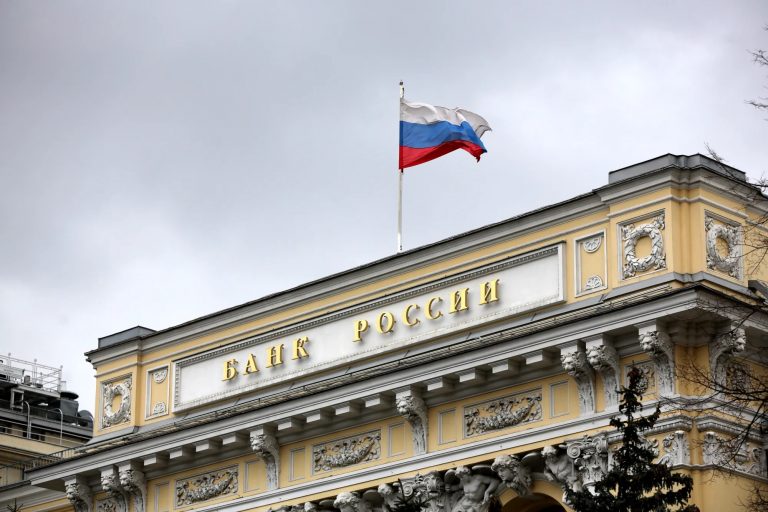
Russia’s largest bank, Sberbank, has launched structured bonds tied to Bitcoin’s price and the U.S. dollar-to-ruble exchange rate. These bonds, initially available over-the-counter to qualified investors, allow returns based on Bitcoin’s performance in USD and any strengthening of the USD against the ruble. Transactions are processed in rubles within Russia’s legal and financial systems, eliminating the need for crypto wallets or foreign exchanges.
Sberbank plans to list similar products on the Moscow Exchange and will launch Bitcoin futures on its SberInvestments platform on June 4, 2025, aligning with the exchange’s introduction of cash-settled Bitcoin futures. This move follows a May 28, 2025, policy shift by the Bank of Russia, allowing financial institutions to offer crypto-linked instruments to accredited investors, though direct cryptocurrency delivery is prohibited.
Sberbank’s move signals a cautious but significant step toward integrating cryptocurrencies into Russia’s regulated financial system. By offering Bitcoin-linked bonds and futures within existing legal frameworks, it bridges traditional finance and crypto markets without requiring direct crypto ownership. The bonds allow qualified investors to gain exposure to Bitcoin’s price movements without navigating unregulated crypto exchanges or wallets, potentially broadening the investor base in Russia.
Register for Tekedia Mini-MBA edition 19 (Feb 9 – May 2, 2026): big discounts for early bird.
Tekedia AI in Business Masterclass opens registrations.
Join Tekedia Capital Syndicate and co-invest in great global startups.
Register for Tekedia AI Lab: From Technical Design to Deployment (next edition begins Jan 24 2026).
The Bank of Russia’s policy change on May 28, 2025, reflects a pragmatic approach to crypto, balancing innovation with control. This could pave the way for further crypto-linked financial products, though restrictions on direct cryptocurrency delivery highlight ongoing caution. Amid Western sanctions and limited access to global financial systems, Russia’s embrace of crypto-linked instruments could be a strategic move to diversify financial tools and reduce reliance on traditional Western markets.
Tying returns to the USD-ruble exchange rate capitalizes on currency fluctuations, potentially attracting investors hedging against ruble depreciation. Russia joins countries like the U.S. and Hong Kong, where crypto-linked financial products (e.g., Bitcoin ETFs) are gaining traction, signaling a global trend toward regulated crypto exposure. Listing Bitcoin futures on the Moscow Exchange and Sberbank’s platform could boost trading volumes and market depth for crypto-linked instruments in Russia.
Investors gain exposure to Bitcoin’s volatility and USD strength, but structured bonds and cash-settled futures limit downside risk compared to direct crypto ownership, appealing to risk-averse institutions. Sberbank’s initiative positions it as a pioneer in Russia’s financial sector, potentially pressuring competitors to develop similar products. The launch highlights a divide between progressive financial institutions like Sberbank, eager to innovate, and the Bank of Russia’s historically cautious stance on cryptocurrencies.
While the central bank now permits crypto-linked products, its ban on direct crypto delivery reflects lingering concerns about money laundering and financial instability.
The products are initially limited to qualified (high-net-worth or institutional) investors, creating an accessibility gap. Retail investors may feel excluded, though Sberbank’s plans to list products on the Moscow Exchange could eventually democratize access. Some Russians may view this as a step toward financial freedom and hedging against economic uncertainty, while others, wary of crypto’s volatility, may see it as risky or speculative.
Russia’s move contrasts with Western approaches. While the U.S. has approved Bitcoin ETFs and Hong Kong explores crypto derivatives, Russia’s products operate within a tightly controlled ruble-based system, reflecting its unique geopolitical constraints. Countries like El Salvador (Bitcoin as legal tender) and Singapore (crypto-friendly regulations) contrast with China’s crypto bans and the EU’s evolving MiCA framework. Russia’s hybrid approach—regulated but restricted—sits in the middle, creating a divide between fully embracing crypto and maintaining state control.
Western sanctions have pushed Russia toward alternative financial systems, including crypto. This creates a divide between nations using crypto to bypass traditional finance (e.g., Russia, Iran) and those integrating it within established systems (e.g., U.S., Switzerland). Bitcoin’s ethos of decentralization clashes with Russia’s state-controlled financial system. Sberbank’s bonds and futures, while innovative, keep crypto exposure within centralized, government-regulated structures, potentially alienating crypto purists.
Investors seeking high returns from Bitcoin’s volatility are pitted against those prioritizing stability, as structured bonds offer a safer but less direct way to engage with crypto markets.
Sberbank’s Bitcoin structured bonds and futures mark a pivotal moment for Russia’s financial landscape, blending crypto exposure with traditional banking under strict regulatory oversight.
The implications include greater mainstream adoption, economic resilience amid sanctions, and a competitive edge for Sberbank. However, the divide—between regulators and innovators, qualified and retail investors, and global approaches to crypto—underscores the complex balance Russia is striking. This move could inspire similar products globally but also highlights ongoing tensions between crypto’s decentralized ideals and state-controlled financial systems.



